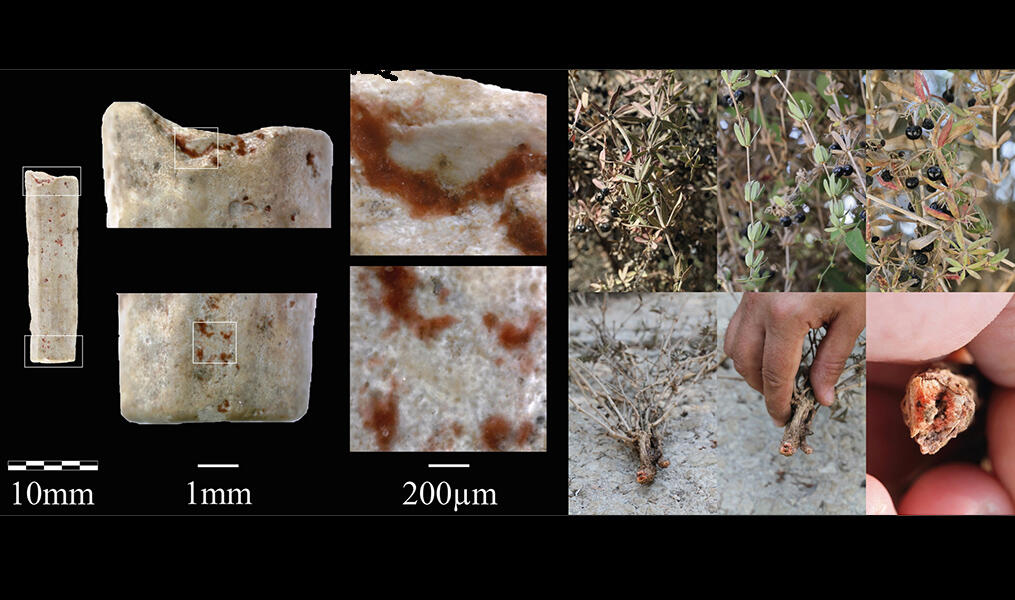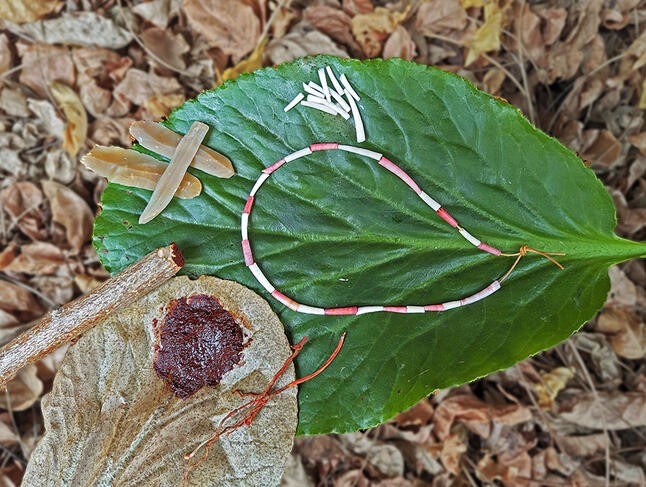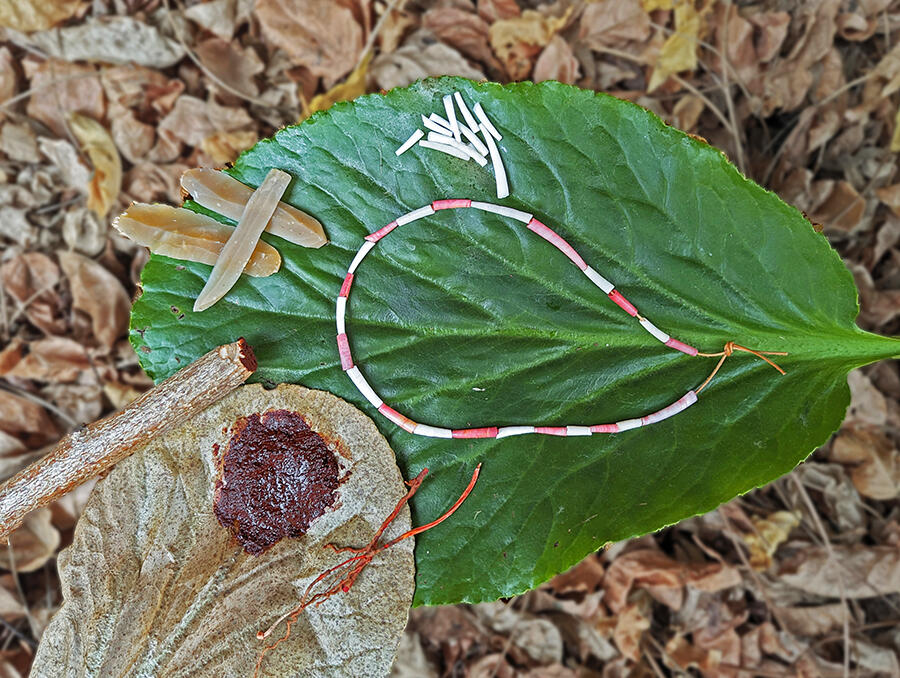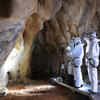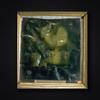You are here
A brighter shade of red

“It was a huge surprise to discover pigments of organic origin that are so old and so well preserved,” reveals Laurent Davin, an archaeologist at the Technology and Ethnology of Prehistoric Worlds (TEMPS)1 laboratory and the Hebrew University of Jerusalem, as well as the co-author of the study published in the journal Plos One. Dating back approximately 15,000 years, these non-mineral dyes were found on beads and jewellery from the Kebara Cave (Mount Carmel, Israel), conserved for nearly one hundred years at the Rockefeller Archaeological Museum in Jerusalem. These Natufian artefacts were familiar to everyone, but they had never been studied; specialists had always believed that the red they detected on the shells, teeth, and other bones of the jewellery were of mineral origin, more specifically ochre. This pigment is considered the “king” of mineral dyes, for it has been “utilised for at least 300,000 years by different species of Homininae. Its recurring and daily use by our species began approximately 140,000 years ago in Africa”, points out Davin.
The symbolism of an intense red
The discovery required cutting-edge analysis technologies such as scanning electron microscopy and Raman spectroscopy, conducted by Ludovic Bellot-Gurlet at the MONARIS2 laboratory and Julien Navas at the CNAM conservatory of arts and trades. These investigations helped researchers quickly grasp that they were dealing with organic rather than mineral dyes. “The strong presence of carbon and oxygen left little doubt about the organic origin of the red pigments. Raman spectroscopy enabled us to determine the type of organism they came from,” explains Laurent Davin. To be precise, “Natufian red” originated from plants typical of the Mediterranean flora of the Rubiaceae family, like madder.
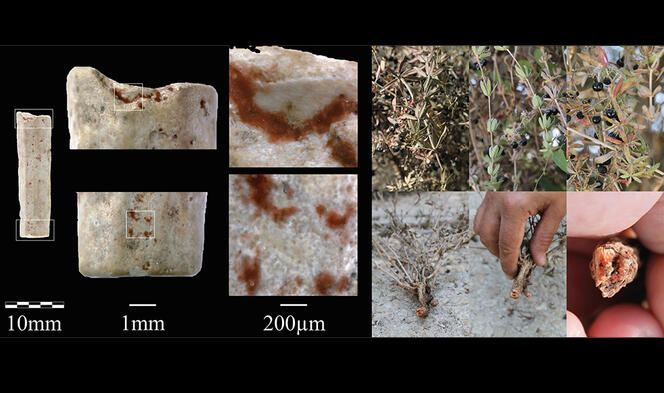
Such red was not easy to obtain. “You first had to dig, pull out the roots, dry them, and reduce them to powder, which was subsequently boiled. It then macerated for a number of days depending on the desired shade.” This process was long and complex compared to the transformation of ochre, which simply required scraping or crushing the stone to extract its colour. In addition to being time-consuming, production of this organic red pigment required detailed knowledge of the environment, and in particular the development of technologies specific to its extraction. “This also means that a great deal of experimentation was needed to arrive at this result,” enthuses Davin.
Why then did the Natufians develop organic pigments that were complicated to obtain when they had abundant ochre ready at hand? For Davin this is “the fundamental question” inherent in the discovery. To provide an answer, the archaeologist believes that the use of pigments, especially ochre, must be resituated within the prehistoric context. At the time, ochre served either in domestic tasks such as fat removal from animal skins with a view to making leather, or for symbolic ends in order to colour the habitat, body, and objects.
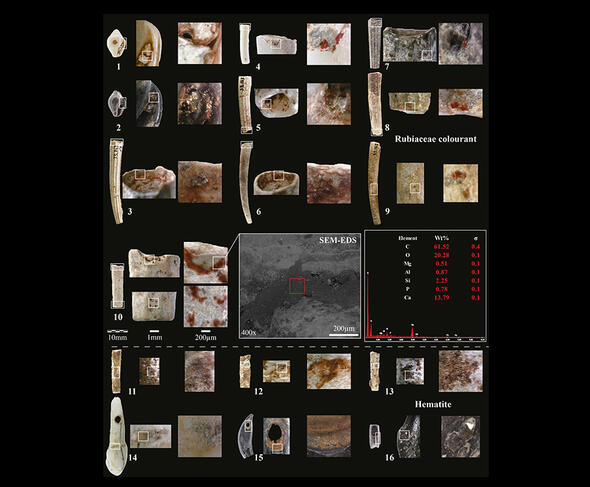

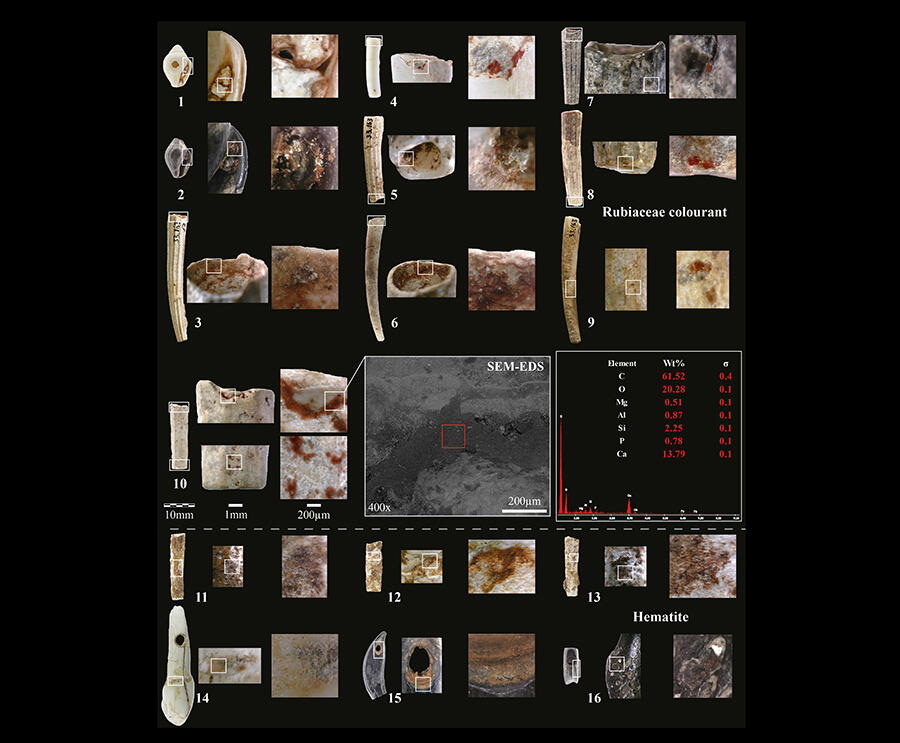
"We are still unsure as to what symbol red is associated with, but the answer could lie in the intensity of organic red compared to mineral ochre. Perhaps this was a way for the Natufians to show that the colour of their jewellery outperformed that of other human groups living in the area." In addition, the Natufian culture showed a certain refinement, along with subtle details intended for those who could grasp their significance. For example, the shells used in jewellery did not always have the same dye or shape, as “some were cut into pieces, while others were in different positions compared to the rest of the jewellery”.
The onset of a sedentary lifestyle
Beyond organic pigments, this discovery provides an enormous amount of information, both about the people who used them and their culture. Why develop such a lengthy extraction process, especially one that was of no use other than decorative to them? The reason is quite simple: the Natufians were sedentary hunter-gatherers. “They were clearly among the world’s first sedentary societies. Traces of humanity’s first villages can be found on their territory, which stretched from southern Turkey to the Sinai,” Davin explains. They therefore had time to spend on something other than the sole predation to which their ancestors had devoted themselves.
This led to significant disruption within the social organisation of the Natufian society. “We believe that this sedentary lifestyle is what prompted a change with respect to the transmission of identity through jewellery, for example, as well as through the representation of individual and shared identities. The Natufians were behind what would fundamentally transform the life of our species. For as soon as Homo sapiens became sedentary, the processes that led to agriculture and livestock farming began, and are still in force today in all human societies.”
It is not just agriculture that has endured through the ages, but also the use of plant and animal dyes. Whether it be the Tyrian purple from the mollusc murex brandaris throughout the ancient Mediterranean, the red extracted from the cochineal (Kermes vermilio) found today in foods, the madder red used in the tomb of Tutankhamun, the Shroud of Turin, the paintings of Van Gogh, or to dye the pants of the French army during the First World War, the Natufians launched a long-lasting fashion – with a bright future. ♦
Reference:
Davin, L., Bellot-Gurlet, L. and Navas, J., “Plant-based red colouration of shell beads 15,000 years ago in Kebara Cave, Mount Carmel (Israel)”, PLOS ONE, 2023. DOI 10.1371/journal.pone.0292264


